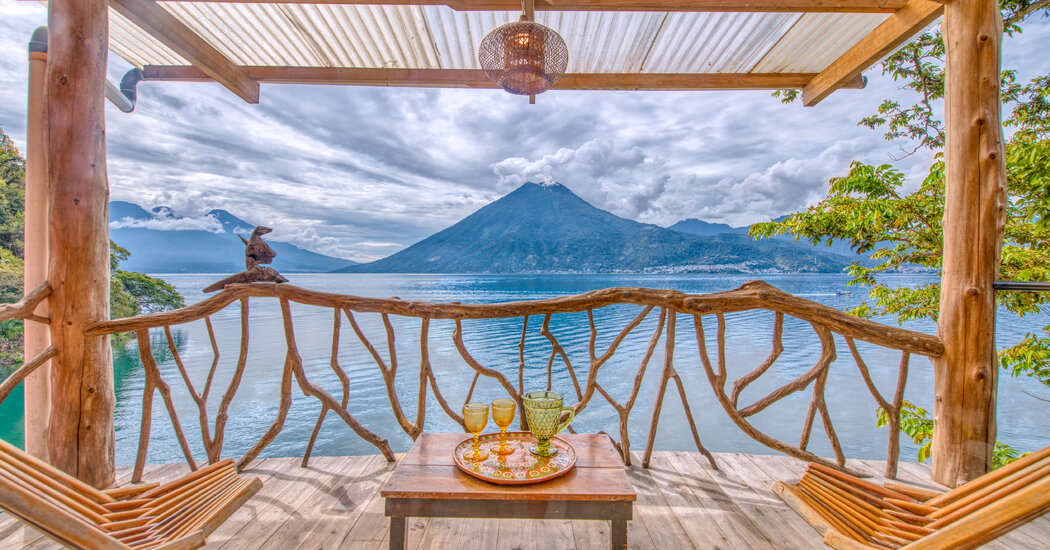It’s close to midnight, two weeks into a precious writing residency in New Hampshire where I have come to finish a novel. My telephone rings.
From Lake Atitlán, Guatemala, a few thousand miles away, comes the voice of a woman I’ve never met: “I left the key to my casita on the bed. Can someone let me back in?”
I’ll get right on it, I tell her. A few hours earlier, I had spent an hour on the phone with a plumber discussing the installation of a new Jacuzzi and ordering wood for the sauna. The day before, I had arranged for a guide to take two guests on a hike to see the sun rise above the volcanoes, and the day before that, an airport pickup for a family of five from Indiana, and dinner on the terrace for a couple from Germany celebrating their honeymoon.
With my property manager out sick, the past few days have been busier than usual, but it’s a rare day in which I don’t find myself occupied with at least one guest staying at the modest place I’d bought 23 years ago as a refuge for writing. It now includes two houses, four casitas, two docks, a fleet of kayaks, a sauna, a yoga platform, a waterfall and a pizza oven.
I’ve been a writer all my life. But these days, my role as an innkeeper occupies me almost as much as fiction. I never intended this, but introducing travelers from all over the world — particularly those from the United States, the country of my birth, whose State Department website has posted warnings about travel to Guatemala for years — has become a central concern of my life.
‘It was my private little oasis’
My history in Central America began more than 50 years ago, at age 11, when my mother took my sister and me on a six-week sojourn on buses and a train from the Texas border to San Cristóbal de las Casas in the Mexican state of Chiapas. My experience of Indigenous culture that summer opened up my world.
A decade later, I was invited to join an orchid hunt in the highlands of Guatemala. Never mind that a civil war was going on.
Our slashed tires didn’t keep me from falling in love with the country — most particularly, the 50 square miles of turquoise Lake Atitlán, and the people who made their homes there, who still dressed in traditional Guatemalan clothing made from hand-woven cloth, cultivated maize on the hillsides and followed the Mayan calendar.
I vowed then that I’d return to the lake, though years passed before I did. By then, I’d raised three children and watched them head off for adventures of…
Click Here to Read the Full Original Article at NYT > Travel…
